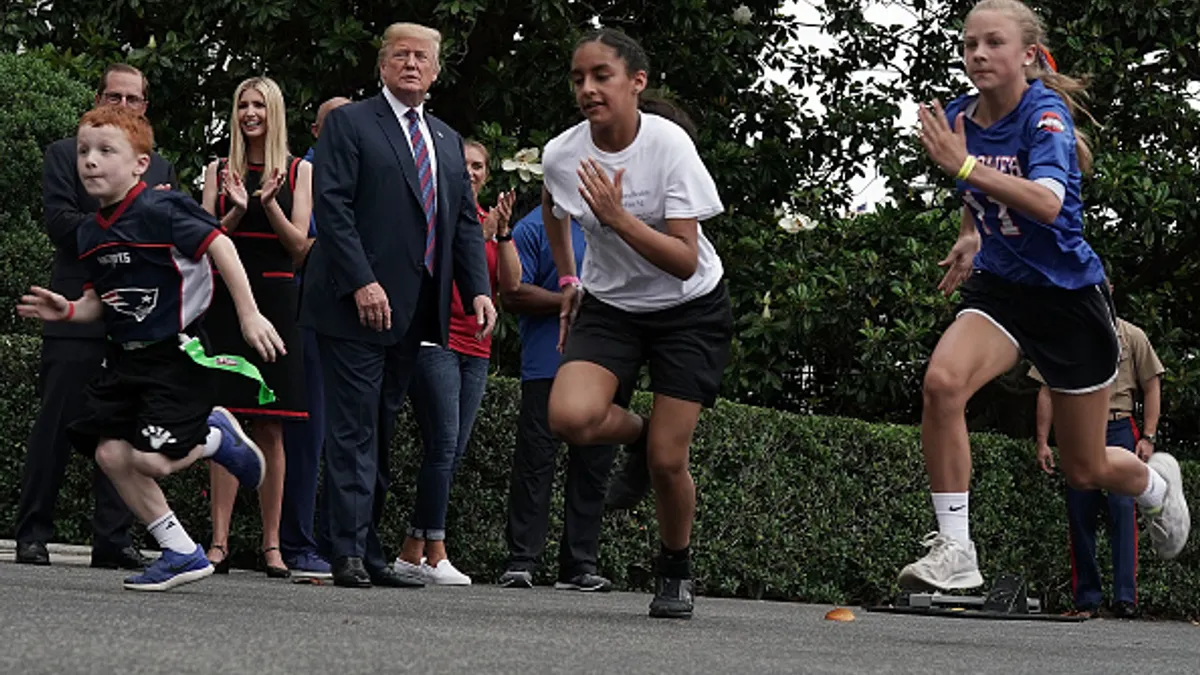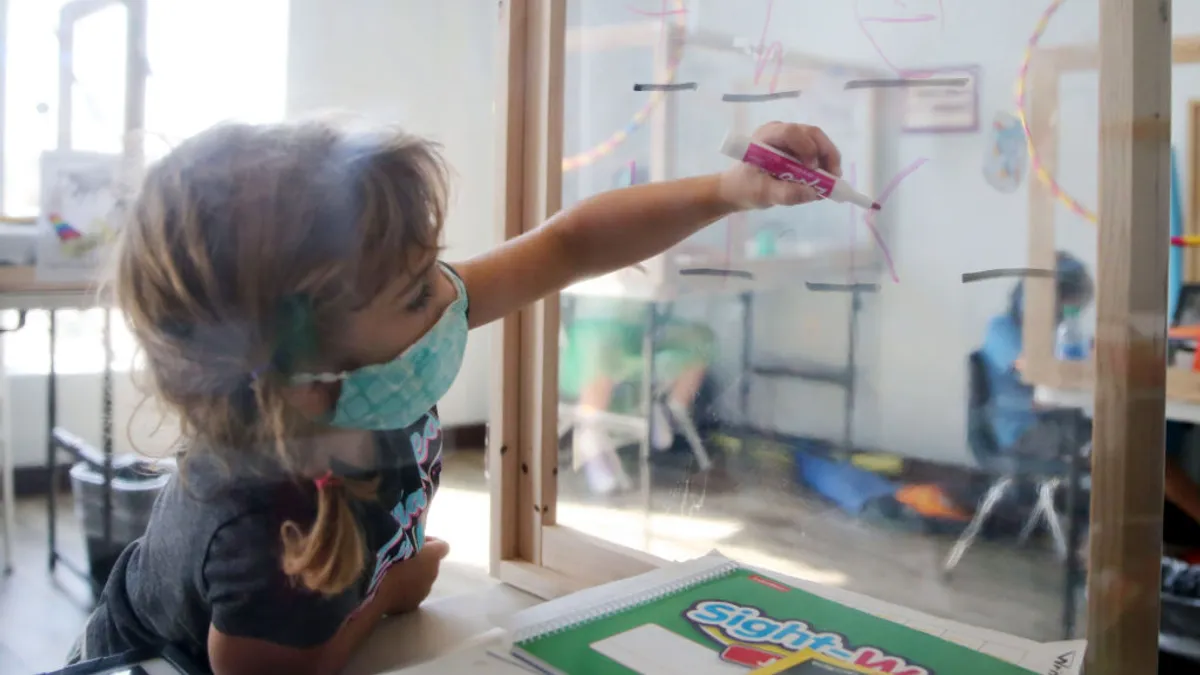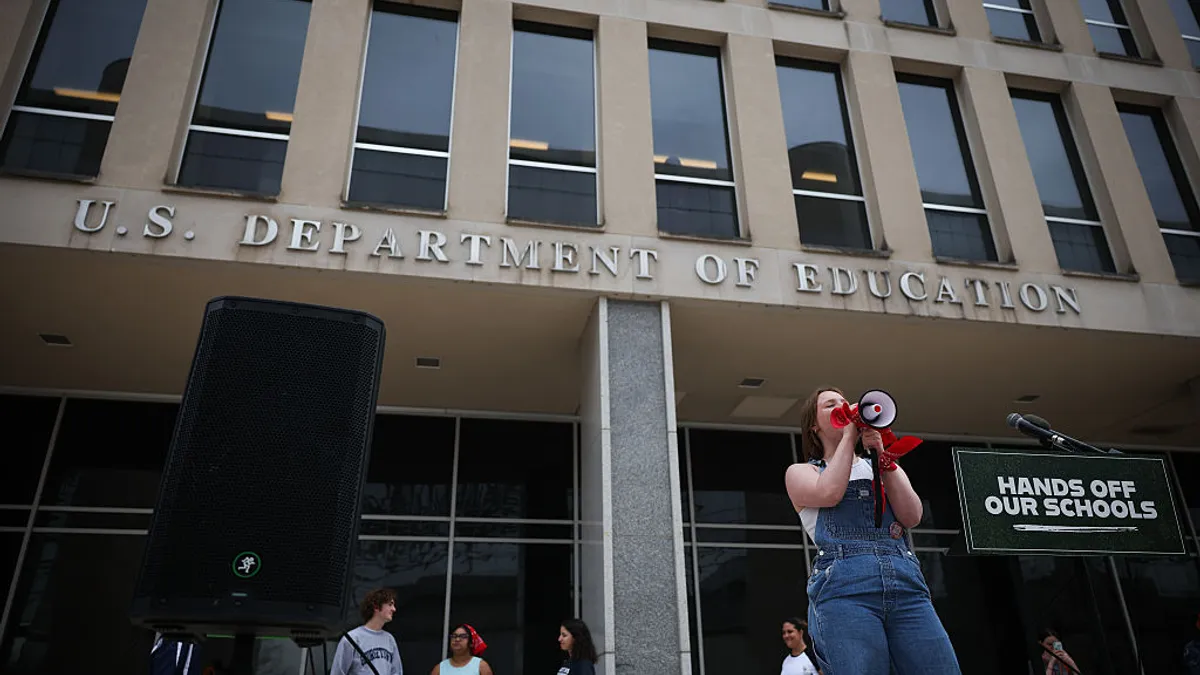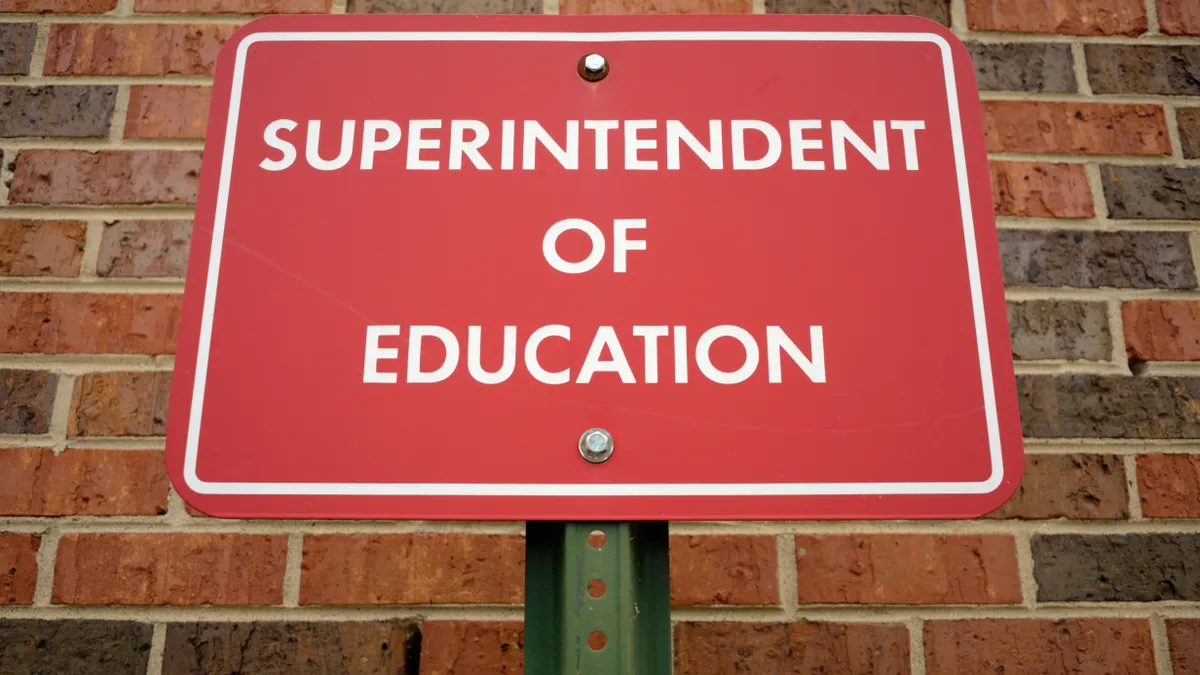As a presidential candidate, Republican Donald Trump promised that if elected in 2024, one of his early priorities would be "closing up" the U.S. Department of Education and sending "all education and education work and needs back to the states."
Trump, who indeed became president-elect after defeating Vice President Kamala Harris, has a long road ahead to gain congressional approval to close the Education Department. But he's likely to make more immediate finance and policy changes at the department by creating and rescinding executive orders and through his budget requests to a Republican Congress.
Proposals to eliminate the Education Department are nothing new, with members of Congress routinely putting forth such bills for at least the last three congressional sessions — but the legislation has never gotten far.
Several education-focused organizations are tempering their reactions until a formal proposal is made.
In a Nov. 8 post by AASA, The School Superintendents Association, Sasha Pudelski, the organization's director of advocacy, said, "AASA urges superintendents to maintain a healthy sense of skepticism" regarding closure of the Education Department.
Still, AASA and other education-related organizations said there are budgeting areas to focus on now and as more details from the incoming Trump administration are revealed. Trump will be inaugurated on Jan. 20, 2025.
Though fiscal year 2025 began Oct. 1, Congress has yet to finalize its spending levels, and the Education Department along with other federal agencies are operating under a continuing resolution that expires Dec. 20. Meanwhile, the Trump administration will propose a FY 2026 budget early next year.
Trump, in his first administration from 2017-2021, sought federal education spending cuts to Title I, the Office for Civil Rights, state grants to improve teacher quality, and 21st Century Community Learning Centers. At the same time, he sought more money for career and technical education as well as public and private school choice.
Federal education funding represents just about 14% of total K-12 spending in 2024, with the rest provided by local and state governments and other sources. Still, education experts say federal investments are important for supporting funding equity and accountability. According to research and advocacy group EdTrust, some state and local funding formulas and programs provide more money to high-income school districts than to low-income districts.
And with schools still needing to focus on COVID-19 learning loss, any federal funding cuts are worrisome, said public school advocates.
Here are four education funding areas to watch under the next Trump administration:
State grants
In a 2023 video on his YouTube channel, Trump said he would send "all education and education work and needs back to the states. We want them to run the education of our children," because the states "will do a much better job of it."
Such a move would align with Republicans’ goals to reduce federal regulations and bureaucracy. Currently, the federal government makes grants for specific programs to states, which must follow certain conditions —including monitoring, reporting and administering student assessments — to receive and spend that funding.
The two largest grant programs are Title I for low-income school districts and Part B of the Individuals with Disabilities Education Act for special education services. These two funding programs pre-dated the creation of the Education Department in 1979, education funding experts point out.
If federal education funding went directly to states without accountability measures, state leaders would have more flexibility to make fiscal decisions. But that could result in vastly different K-12 experiences for students depending where they live.
School choice
Trump and GOP members of Congress have promoted the expansion of school choice initiatives, including taxpayer funding to support private school tuition. State-level private school choice efforts have increased in recent years with enrollment in such programs exceeding 1 million nationwide, according to data analyzed by pro-school choice advocacy group EdChoice earlier this year.
Trump's campaign platform vowed to support universal school choice, expand 529 education savings accounts and treat homeschooling families equally. It did not, however, offer details on how to accomplish this.
Project 2025, a blueprint for a second Trump administration written by conservative research and policy organization The Heritage Foundation, calls for taxpayer-funded school choice options for students attending schools in Washington, D.C., students in active-duty military families, and students attending schools on tribal lands. Trump disavowed Project 2025 while campaigning.
Public school advocates argue that private school choice programs do not improve student academic outcomes and siphon money away from public schools, which educate most school-aged children.
Special education
Project 2025 recommends that most funding for IDEA be converted into a "no-strings formula block grant" used for educating students with disabilities. Those funds should be distributed directly to districts through the U.S. Department of Health and Human Service’s Administration for Community Living, the document says.
During the first Trump administration, then-Education Secretary Betsy DeVos defended budget proposals to cut IDEA. Those plans brought multiple failed attempts to eliminate funding for Special Olympics, a school and community-based program that promotes social and sports participation for people with disabilities.
Public school, special education and disability rights advocates point out that Congress has a long track record of bipartisan support for IDEA services for students with disabilities. However, they also note that Congress has never come close to meeting the pledge it made in 1975 for "full funding" of IDEA, or 40% of the additional per-pupil cost for providing special education services.
For fiscal 2025, IDEA federal support will be just above 10%, said Kuna Tavalin, senior advisor for policy and advocacy for the Council for Exceptional Children, a nonprofit professional organization for special educators.
"Our message to Congress is and has been for a really long time, ‘Fund it so that we can do a better job’ — not we as individual members, but as a field, as a system," Tavalin said.
Curriculum
Although long-standing Education Department policy is to leave curriculum decisions up to the state and local governments, the federal agency — through grants and policy — can influence what lessons in schools are or are not emphasized.
Trump's campaign platform pledges to "ensure children are taught fundamentals like Reading, History, Science, and Math, not Leftwing propaganda." It also promises to "defund schools that engage in inappropriate political indoctrination of our children using Federal Taxpayer Dollars."
Although the platform doesn't offer more details, it is likely referring to state-level censorship debates about books and curricula that feature LGBTQ+ characters or cover sex and sex-related topics.
Additionally, Trump has vowed to cut federal funding for schools that push "inappropriate racial, sexual, or political content on our children." Instead, his administration would support the teaching of America's founding and western civilization.
Career and technical education — a K-12 issue that has bipartisan support — may likely see funding increases under the incoming administration, with Trump promoting project-based learning, work experiences and career training programs.






















